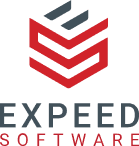Organizations are constantly collecting large volumes of data, and making sense of it requires powerful storage tools and analytics platforms. Raw data by itself is not valuable. It must be stored, processed, and analyzed effectively. This is where cloud data platforms come into the space, and two prime contenders that stand out are Snowflake and Databricks. But the question here is how do you choose between these platforms? The underlying article will help you understand the key features, vital differences, and aspects that can aid you in finding the right solution.
Overview of Snowflake and Databricks

Snowflake is a fully managed cloud data platform that provides scalable storage, fast query performance, and native integration with major BI and data tools. Its multi-cluster shared data architecture ensures the necessary performance by integrating smoothly with the leading data tools.
According to Gartner Peer Insights, Snowflake has received an overall rating of 4.6 out of 5, based on 331 reviews, reflecting strong customer satisfaction and widespread adoption.
Some of the key features of Snowflake include:
- Automatically scales resources based on demand
- Handles structured and semi-structured data (e.g., JSON, Avro)
- Provides isolated compute for different workloads
- Supports standard and extended SQL
- Offers robust security with role-based access and encryption
- Connects easily with popular BI and ETL tools
Databricks is a cloud-based analytics platform powered by Apache Spark, designed for ETL, machine learning, and advanced analytics for data teams. Designed for scalability and collaboration, it simplifies data pipelines and enhances efficiency across data workflows.
As reported by Forbes, Databricks achieved an annualized revenue run rate of $2.4 billion by the midpoint of fiscal 2024, marking a 60% increase from the previous fiscal year.
Some of the key features of Databricks include:
- Optimized for large-scale distributed data processing
- Supports a wide range of data types, including unstructured data
- Customizable cluster and runtime configurations
- Multi-language support: SQL, Python, R, Scala, and Java
- Built-in access control and workspace management
- Integrates with tools like MLflow, Power BI, and TensorFlow
Snowflake vs Databricks: Key Distinctions
1. Primary Use Cases
Snowflake excels as a data warehousing solution, supporting real-time analytics, ad hoc queries, and business intelligence reporting. Databricks, built on Apache Spark, is designed for distributed computing and parallel processing. It excels in real-time analytics, complex ETL processes, machine learning, and AI model building.
2. Purpose and Architectural Differences
Snowflake follows a multi-cluster shared data architecture that separates compute and storage, enabling independent scaling for optimized SQL-based analytics. This makes it an ideal choice for business intelligence workloads. On the other hand, Databricks provides a unified environment for ETL, machine learning, and interactive data exploration, making it an excellent choice for large-scale data engineering and data science applications.
3. Data Processing Capabilities
Snowflake specializes in handling structured and semi-structured data, making it a preferred choice for complex queries and analytics in business intelligence. But, if you are handling unstructured data, real-time processing, and machine learning, Databricks delivers the flexibility and computational power needed for advanced data processing tasks.
4. Scalability and Performance
With Snowflake, compute and storage scale separately, contributing to efficient resource optimization in large-scale data warehousing. Meanwhile, Databricks depends on Spark clusters for dynamic scalability, making it ideal for complex ETL workflows, real-time analytics, and big data transformations.
5. Machine Learning and AI Integration
Snowflake integrates with external AI/ML platforms but lacks built-in capabilities for model training. In contrast, Databricks includes a collaborative notebook environment with native support for popular ML libraries, making it ideal for developing and deploying machine learning models.
6. Ease of Use and Setup Complexity
Snowflake provides a hassle-free setup and user-friendly experience, making it accessible to business users and analysts without extensive technical knowledge. Databricks requires expertise in Spark and distributed computing, leading to a steeper learning curve for data engineers and scientists.
7. Pricing Models and Cost Efficiency
Snowflake charges users based on separate compute and storage consumption, letting businesses optimize costs based on actual usage. Databricks offers pay-as-you-go pricing for interactive clusters and reserved pricing for dedicated workloads, with costs influenced by cluster size and runtime.
When to Choose Snowflake: Best Fit Scenarios
- Ideal for Centralized Data Warehousing
A healthcare organization needs a cloud-based solution to securely store and analyze critical patient information while maintaining strict regulatory compliance. Snowflake's robust data handling tools and scalable architecture support secure, compliant data handling.
- Ensuring Data Accessibility and Democratization
A retail organization needs to provide secure, real-time access to consolidated sales data for regional managers without creating redundant copies. Snowflake’s native data-sharing capabilities enable seamless access control, ensuring teams can analyze up-to-date insights without data duplication.
- Optimizing Business Intelligence Workflows
A bank wants to optimize its business intelligence processes by improving data integration and reporting efficiency. With Snowflake’s high-performance querying and scalable architecture, analysts can generate real-time dashboards and complex financial reports.
When to Choose Databricks: Best Fit Scenarios
- A Comprehensive Platform for Data Science
A telecom company wants to forecast customer churn and implement data-driven retention strategies using machine learning models. Databricks provides a scalable environment for processing vast amounts of customer interaction data, training predictive models, and deploying real-time analytics for improved decision-making.
- Real-Time Analytics and Streaming Data
An urban development initiative relies on IoT sensors to monitor traffic congestion and air pollution. Databricks’ real-time analytics processes continuous data streams, enabling authorities to take immediate action on critical urban challenges.
- Powering Advanced Data Engineering
A research organization works with large genomic datasets that require extensive preprocessing before analysis. Databrick's distributed computing power automates ETL pipelines, allowing researchers to efficiently structure raw sequencing data for advanced medical research.
Final Verdict: Which Platform Will Future-Proof Your Data Strategy?
Both Snowflake and Databricks are powerful cloud-based platforms with distinct strengths. In the case of Snowflake, the platform is mostly adopted by organizations looking for optimum data warehousing and flawless integration with traditional BI systems.
When it comes to Databricks, it is the ideal choice for businesses requiring advanced analytics, machine learning workloads, and large-scale data engineering. Also, with the Apache Spark-based architecture and support for instant data processing, Databricks shines atop other platforms considering the need to work with structured and unstructured data at high velocity.
Ultimately, the choice between the two platforms depends on specific enterprise goals, including the nature of the workload, type of data involved, specific skill levels of the team, and budget plans. Some businesses even use both platforms, using their full potential to address different aspects of their analytics and data processing needs.
Summing Up
Choosing the right cloud data platform is the key to unlocking the true potential of your business data. Whether you require a high-performance data warehouse like Snowflake or a robust analytics and machine learning engine like Databricks, the choice relies on your use case and organizational requirements.
At Expeed Software, we help organizations design, deploy, and optimize their cloud data strategies. Our professionals can assist you in choosing and implementing the right platform to improve efficiency, make better decisions, and future-proof your data infrastructure.
Contact us now to learn how Snowflake, Databricks, or a hybrid solution can revolutionize your data operations and fuel business growth!

Expeed Software is a global software company specializing in application development, data analytics, digital transformation services, and user experience solutions. As an organization, we have worked with some of the largest companies in the world, helping them build custom software products, automate processes, drive digital transformation, and become more data-driven enterprises. Our focus is on delivering products and solutions that enhance efficiency, reduce costs, and offer scalability.


